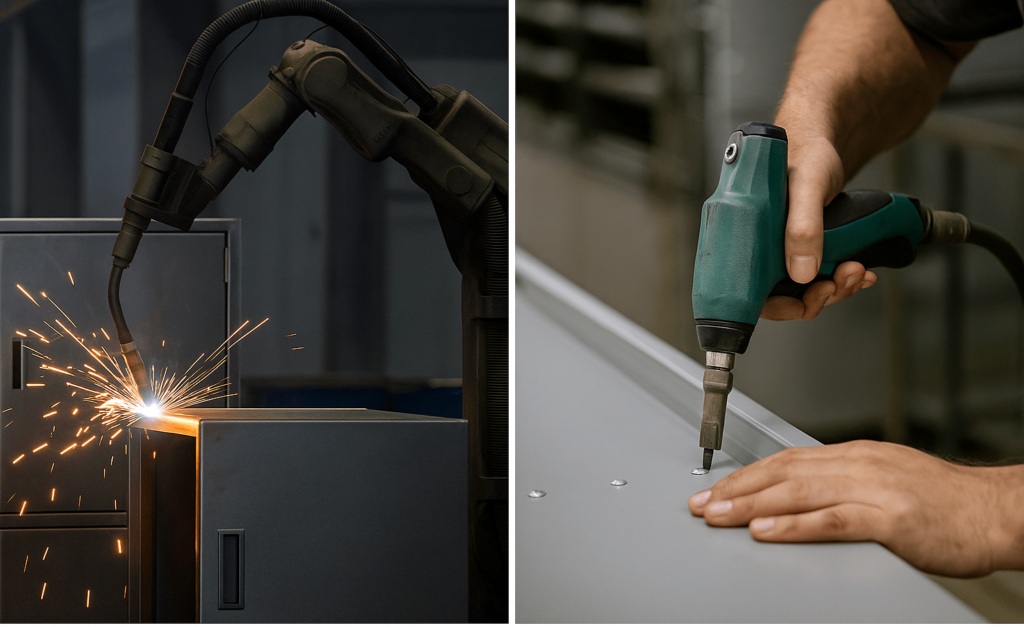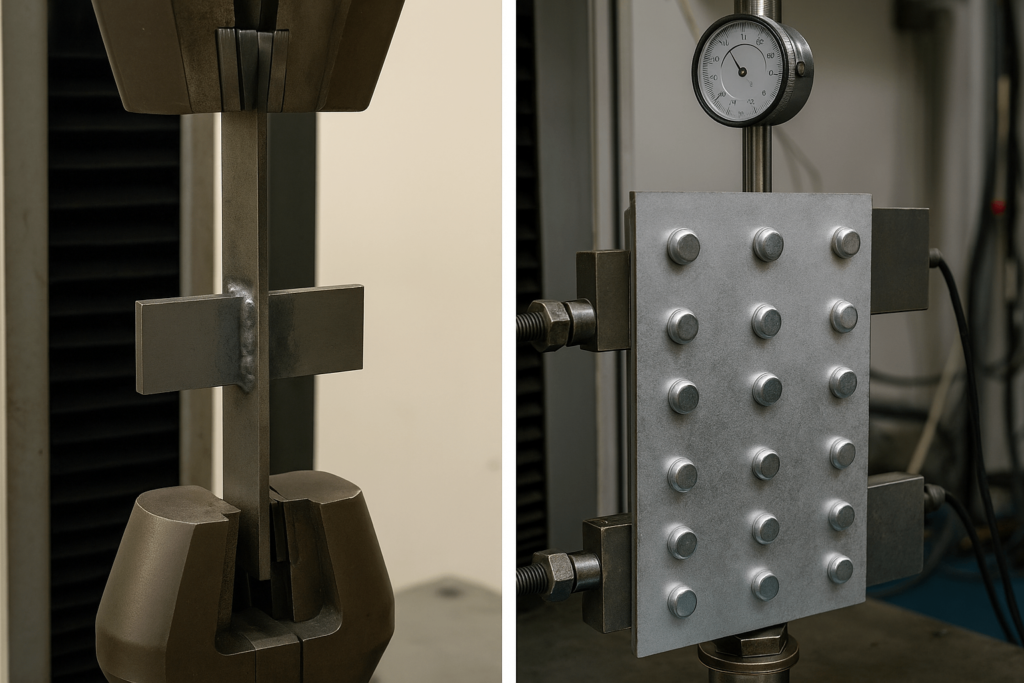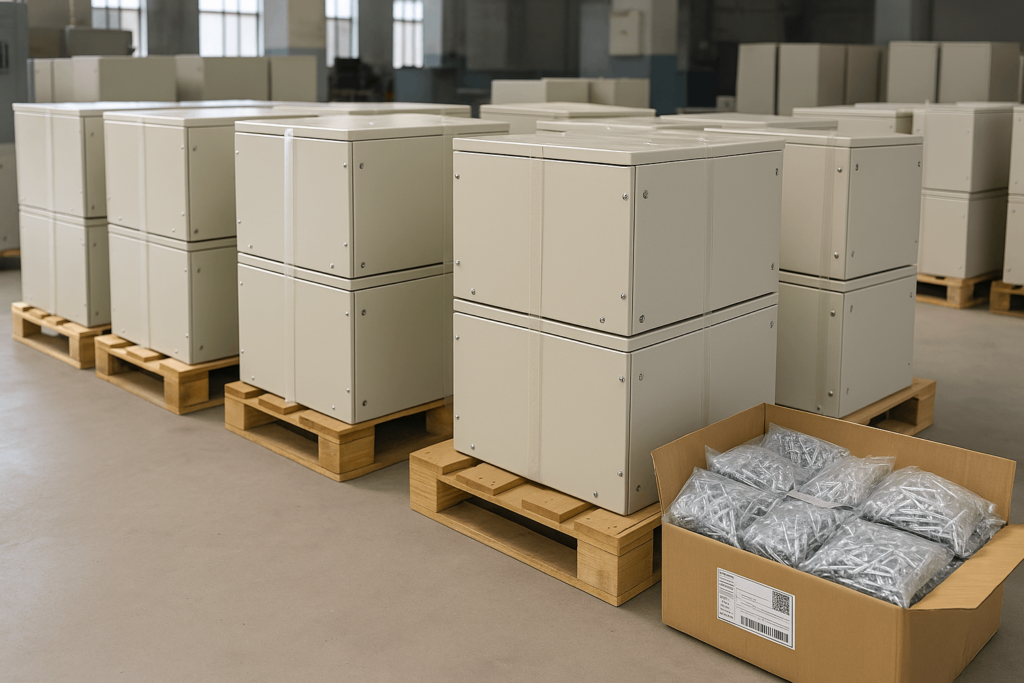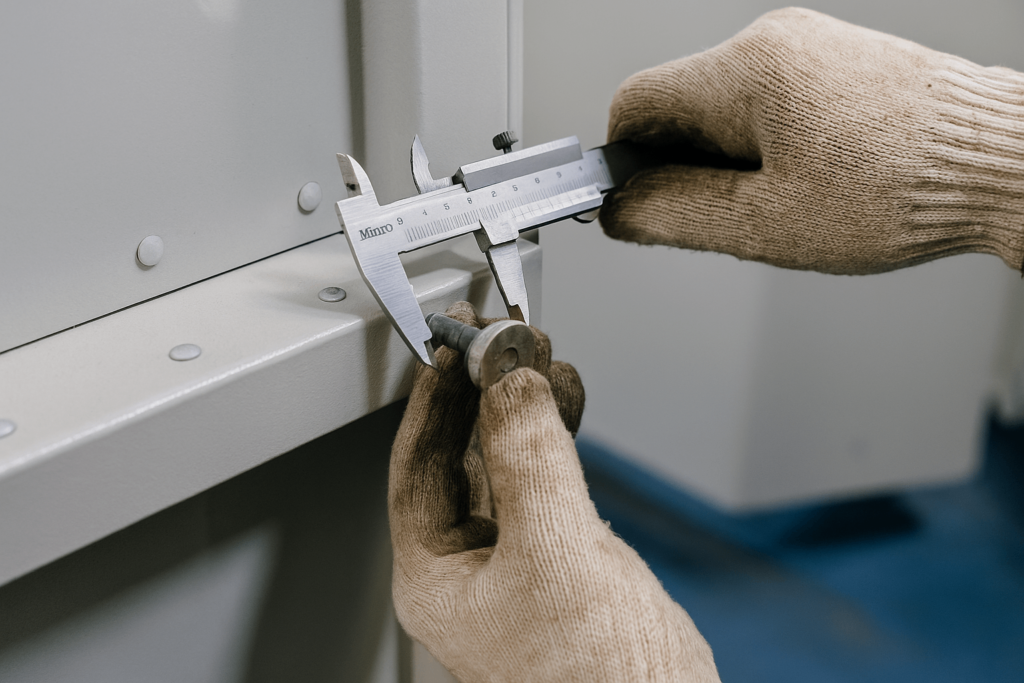Redefining “Stronger”: What Global Buyers Are Really Asking
The question “Are rivets stronger than welds?” is often raised by international procurement teams managing bulk metal component orders. Yet strength is not just a lab metric—it’s how joints perform over time.
In sectors like EV infrastructure, vending systems, and commercial fixtures, load capacity is only one consideration. Other factors include corrosion resistance, field-serviceability, and packaging logistics—all of which influence how OEM metal fasteners are selected for global rollouts.
Joint Selection Isn’t Just About Load — It’s About Logistics, Maintenance, and QA
Buyers must evaluate how joining methods impact:
Surface finishes and coated part compatibility
Field-serviceability and repair access
Post-sale maintenance cycles
Quality assurance protocols across distributed markets
Modularity for efficient packaging and shipping
At YISHANG, we help buyers map joint types—be it 1/4 rivets steel, MIG welds, or hybrid designs—to real-world production goals like cost containment, visual standards, and factory-to-field consistency.
In industries like telecom hardware and smart vending machine enclosures, choosing fasteners for vending machine frames or pre-coated display panels requires balancing load resistance with aesthetic outcomes.
Why Rivets and Welds Continue to Coexist in High-Volume Metal Fabrication
Welds fuse metal at the molecular level. Different types of welds—including a fillet, one of the five basic weld joints—are ideal for structural elements such as internal support frames and beams. Welds shine in high-load, permanent installations that won’t need disassembly.
But rivets are indispensable in modular product lines. A rivet becomes a permanent part of the structure by mechanically forming through layers. No heat is used, preserving material integrity—a key factor when working with surface-finished parts or thin aluminum.
This makes rivets particularly valuable for painted components, laser-cut panels, or multi-material enclosures. Brass pop rivets and closed end aluminum rivets are common in high-visibility products due to their clean finish and stable performance.
Riveting also enables cold joining for sheet metal OEM designs—where thermal distortion or coating burn risk makes welding impractical.

Mechanical Behavior: Rivets vs Welds Under Operational Stress
Tensile & Shear Performance
Welds excel in tensile strength due to material fusion. But rivets—especially when installed in rows—handle shear stress exceptionally well. Per acceptance standards for riveting of solid rivets, spacing and substrate material determine load distribution efficiency.
Fatigue and Stress Propagation
Riveted joints tolerate cyclic loads better over time. Heat-affected zones (HAZ) around welds often initiate fatigue cracks in mobile systems. Rivets distribute stress without altering the base metal microstructure.
Thermal and Surface Integrity
Welding can distort parts or damage pre-treated surfaces. For powder-finished steel or anodized aluminum, cold-joining methods using aluminum rivets for sale maintain design specs and eliminate rework cycles.

Smart Assembly: Why Procurement Teams Consider Rivets First
Bulk procurement is not just about specs—it’s about minimizing variation, cost-of-failure, and regional compliance issues. Here’s a matrix showing how riveting and welding stack up:
| Criteria | Riveting | Welding |
|---|---|---|
| Surface/coated part assembly | Compatible (cold process) | Risk of burning/distortion |
| QA inspection simplicity | Easy (visual standard) | Requires NDT, skilled techs |
| Packaging & modular shipping | Flat-pack friendly | Bulky/welded structures harder to ship |
| Cost of training and tooling | Low | High initial setup cost |
| Field assembly/repairability | Easy to replace/retrofit | On-site welding limits flexibility |
For buyers of flat-pack equipment, retail display frames, vending kiosks, or control cabinets, the assembly strategy must support overseas logistics and non-specialized labor.

Where Rivets Excel: Buyer Application Scenarios
Pre-coated Telecom Enclosures
Pre-finished aluminum sheets (1–2.5 mm) can warp under welding temperatures. Using alum rivets ensures low scrap rates, and closed end aluminum rivets seal against dust and moisture.
Control Panels and Power Cabinets
Riveted panels offer easier service access without compromising frame integrity. Many OEMs adopt hybrid joints—internal welds with external rivets—to support long-term maintenance and reduce cost. This approach also improves inspection efficiency when visual QA is more practical than magnetic NDT.
EV Charging Stations & Public Equipment
A North American client worked with YISHANG to replace welded kiosks with riveted modules using brass pop rivets and 1/4 rivets steel. Result: 42% faster field assembly and 27% shipping cost reduction. In modular charging housings, riveting supports maintenance-friendly metal fasteners for quick retrofit.

Lifecycle, QA, and Maintenance Outlook
For scalable global rollouts, buyers value joints that streamline service. Rivets enable quick visual checks, avoiding the complex inspection needed for welds.
More importantly, failure in riveted joints is gradual—reducing sudden breakdown risk. Weld cracks, if hidden, may cause full system failure.
When designing for overseas installations or contract-based QA enforcement, riveted designs reduce lifecycle costs, especially in mid-volume production. Rivets also eliminate welding distortion in powder-finished metal jointing for modular builds.

Cost and Risk Evaluation Table
| Factor | Riveted Assembly | Welded Assembly |
| Setup cost (batch start) | Low (flexible tooling) | High (jig precision needed) |
| Visual inspection cost | Minimal (non-destructive) | Higher (NDT for load points) |
| Post-sale field repairs | Easy with basic tools | Requires grinders/weld gear |
| QA rejection rate (avg.) | Lower in surface-treated units | Higher with HAZ or surface damage |
One of YISHANG’s EU clients saw 34% fewer QA failures on site after switching to rivet-integrated external panels.
Are Rivets Stronger Than Welds? Or Just Smarter?
While welds offer higher tensile strength, rivets often provide smarter value across modular applications.
For modular or surface-finished assemblies, rivets lower logistics costs, avoid heat distortion, and streamline workforce training.
Compared to bolts, rivets offer better long-term stability for field installations by eliminating torque checks and loosening risk. For modular cabinets, buyers consistently report faster setup times and more consistent results with riveting techniques.
Quick Comparison Table for Buyers
| Scenario | Recommended Joint Type |
| Internal structural frame | Welded |
| Serviceable external enclosure | Riveted |
| Powder-coated modular displays | Riveted |
| Overseas flat-pack systems | Riveted |
| Fully robotic production line | Welded |
| Customizable kiosk or cabinet | Hybrid |
Buyer FAQ — Direct Answers for Procurement Teams
Are rivets stronger than welds in real-world shipping and installation?
In many modular or coated systems, rivets prove more reliable due to simpler setup and fewer failure points in visual presentation.
What are rivets used for in OEM furniture and racks?
They’re often selected for scalable builds where easy logistics and routine servicing are essential.
Can rivets replace welds in structural assemblies?
In specific shear-focused or cosmetic structures, yes. We can support a suitability analysis based on your project layout.
Do you offer different kinds of rivets?
Absolutely. Our range includes solid rivets, closed end aluminum rivets, brass pop rivets, and custom sizes tailored to your specs.
Is visual QA enough for riveted systems?
For most modular setups, yes. Our process aligns with the acceptance standards for riveting of solid rivets and quality benchmarks across industries.
Is riveting better for powder-finished panels?
Yes. Powder-coated parts often require metal jointing without thermal distortion. Rivets are ideal.
Summary for Global Procurement Teams
Choosing between rivets vs welding isn’t about raw tensile stats. It’s about matching joint methods to your production goals, packaging constraints, and QA capacity.
If your system demands surface protection, overseas assembly, or cost control at scale—riveting may be the right path.
YISHANG supports OEM and bulk buyers with metal joining solutions backed by 26+ years of sheet metal experience.
Have a spec sheet or design in progress? Let’s explore the right jointing strategy for your project.

